
Did you know that, on average, projects exceed budgets by 27%? For finance leaders in Saudi Arabia’s small and medium enterprises (SMEs), that gap isn’t just a number; it directly impacts cash flow, profitability, and strategic planning. Even with careful planning, some projects hit their budget perfectly while others spiral out of control.
The difference isn’t poor intention; it’s the estimation method. Choosing the right approach for your project’s size, scope, and uncertainty can determine whether you stay on budget or face costly overruns.
In this blog, you’ll discover how to select the right project estimation methods, apply them effectively, and turn estimation from guesswork into a precise, controlled financial practice.
Project estimation forecasts how much time, money, and resources a project will require to reach completion. Think of it as your financial roadmap before execution begins; it sets budgets, timelines, and manpower, helping you assess whether a project is feasible or needs adjustment.
A solid estimate goes beyond surface-level costs and includes:
When done right, project estimation becomes your first line of financial defense, ensuring funds are allocated efficiently, minimizing overruns, and keeping cash flow predictable.
But the accuracy depends not just on what you estimate, but how you estimate it. Let’s look at why precise Saudi SME project estimation matters so much.
Also Read: Cost Planning in Construction: Explore Key Benefits & Types
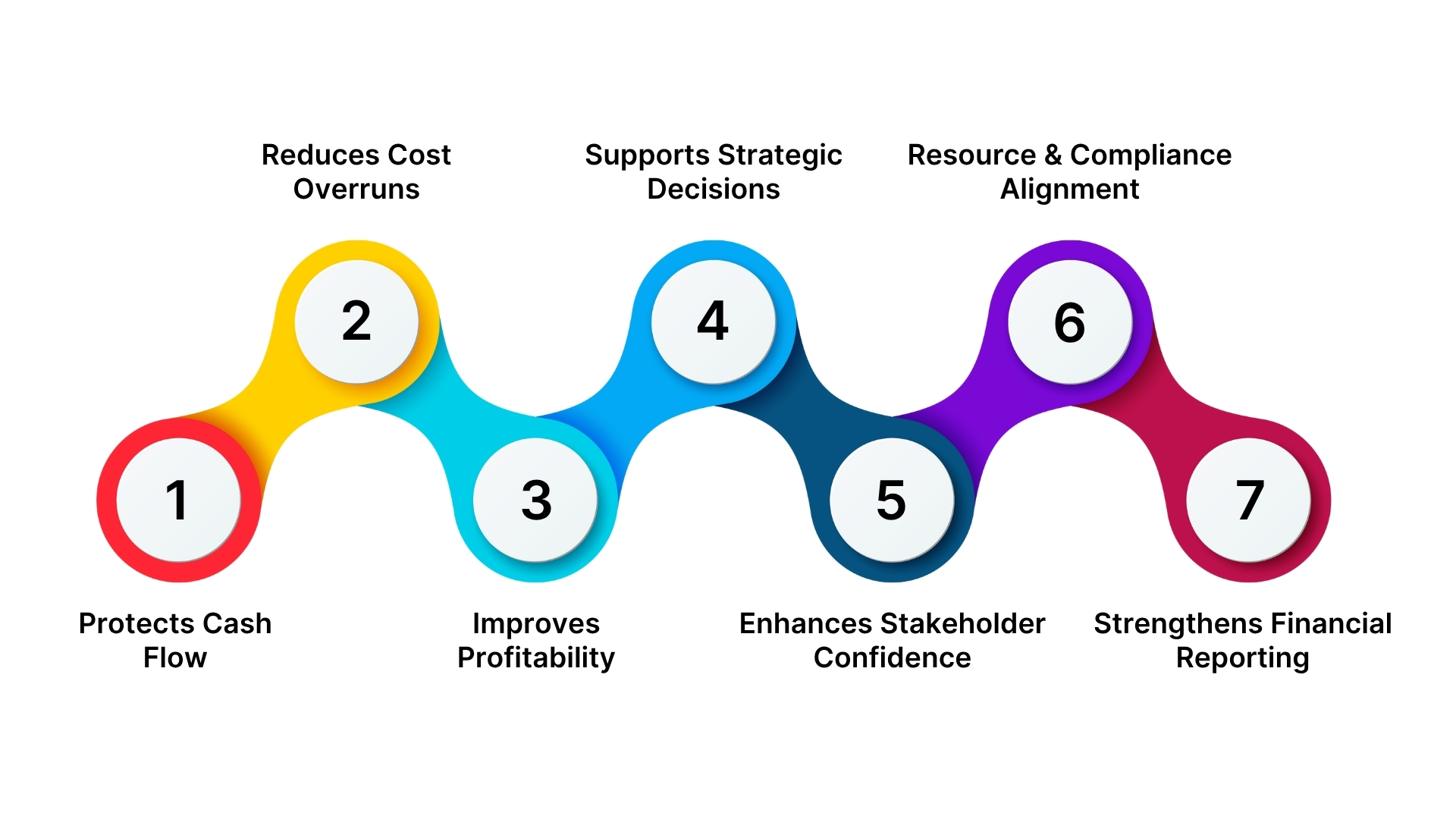
Accurate estimation is more than planning; it affects finances, operations, and decision-making. In Saudi Arabia, where projects often tie into Vision 2030 initiatives or strategic government contracts, precise estimates are critical.
Here are the benefits:
With these benefits in mind, choosing the right estimation method is crucial. It’s the foundation of predictable, well-managed projects that protect both your budget and your business growth.
Also Read: Saudi Businesses Rejoice! HAL Accounting Software Is Here To Revolutionize Your Finances
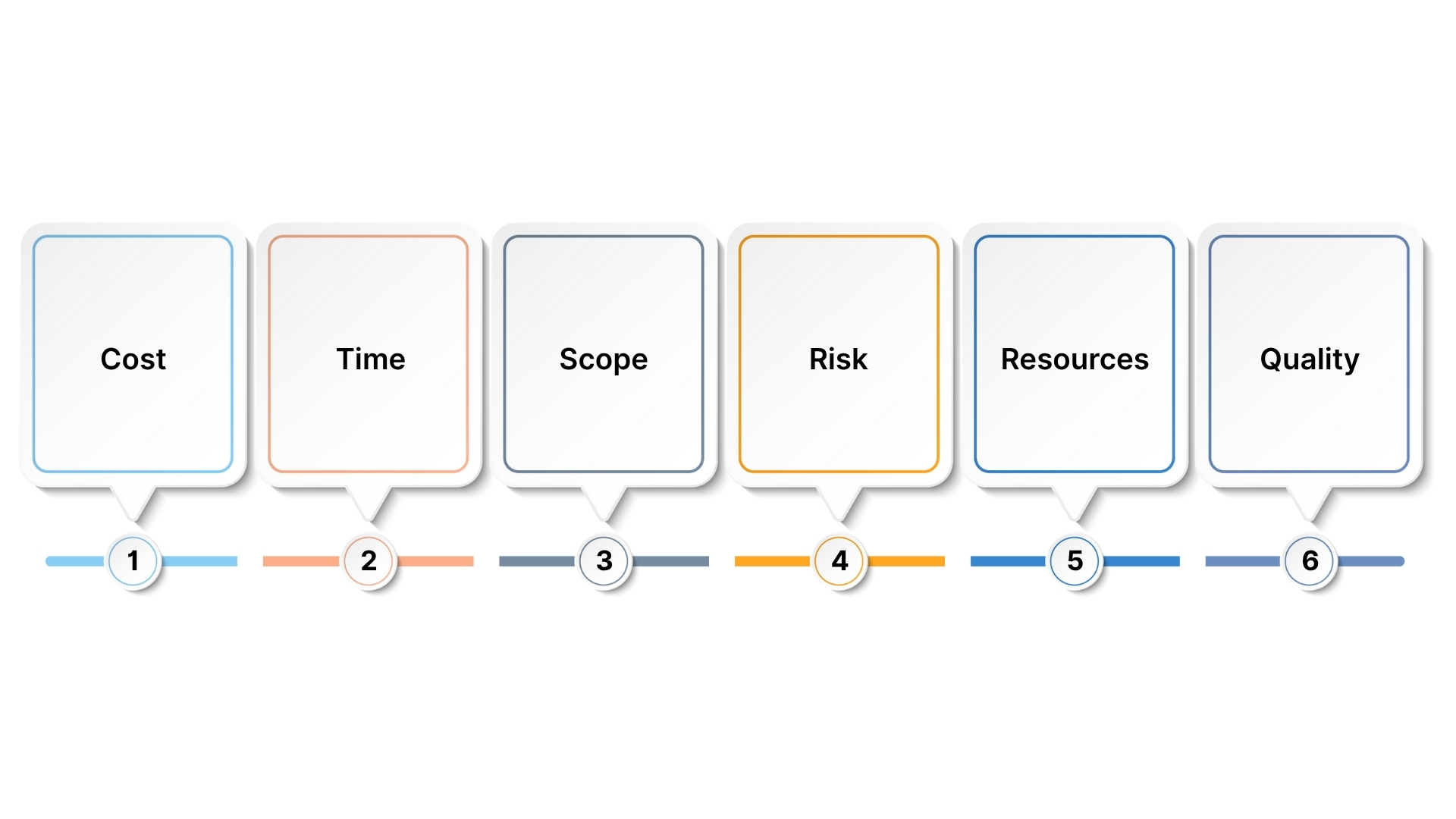
Every successful project starts with accurate estimates. There are six key areas you need to assess: cost, time, scope, risk, resources, and quality. Each one plays a role in shaping the project’s outcome. Let’s break them down.
Each of these six factors is connected. Assessing them accurately gives you a realistic plan, helps you avoid surprises, and sets the stage for successful execution. Now, let’s explore how, by diving into the most effective project estimation methods used by finance and operations leaders.

No single estimation method works for every project. Each has its strengths, depending on the amount of information available and the level of detail required. Your choice should match your project’s size, scope, available data, and desired accuracy.
Here are six widely used methods and how CFOs can apply them effectively.
Let’s break down each technique in detail, exploring how it works, when to use it, and its key advantages and limitations.
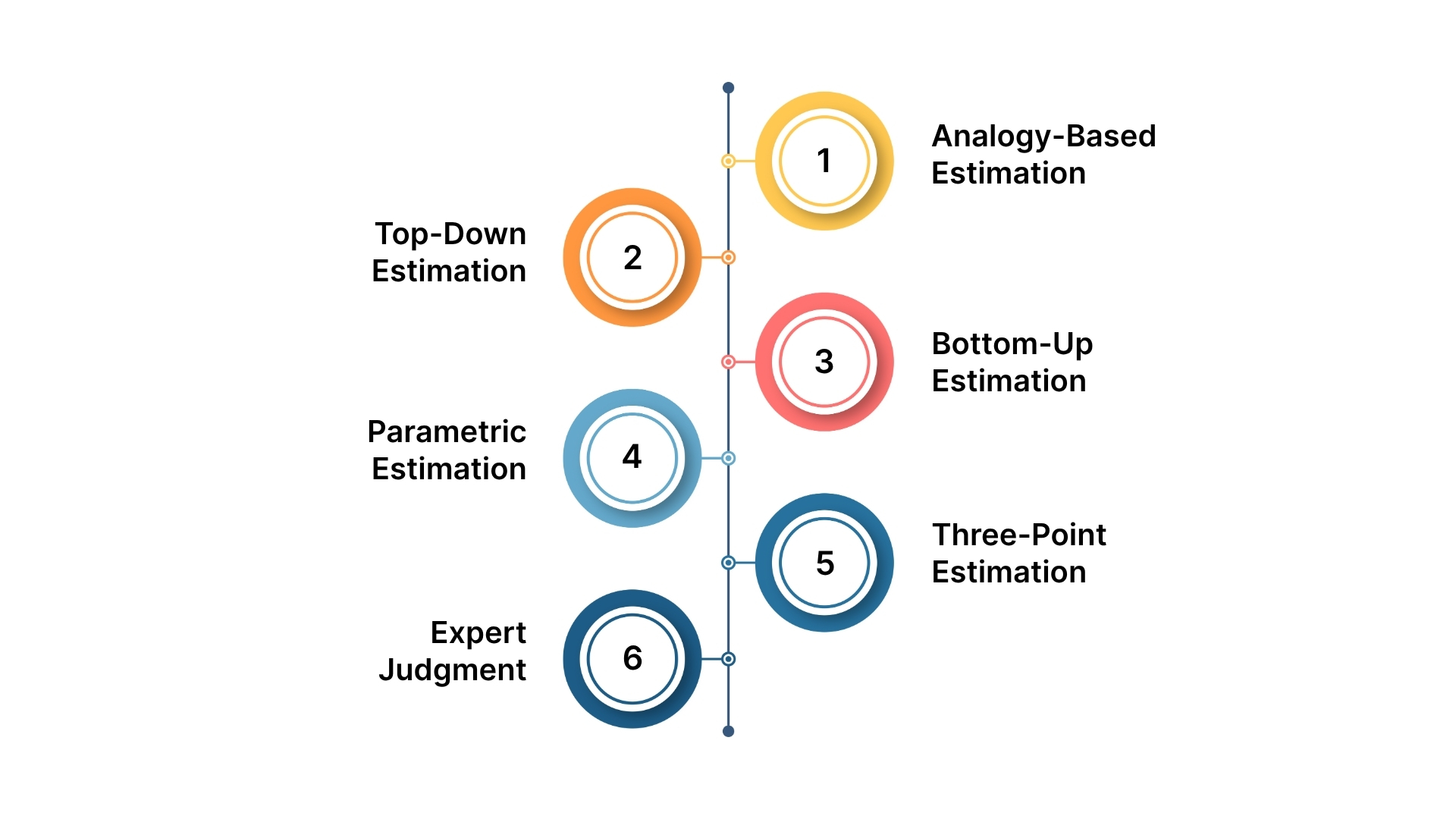
Analogy-based estimation uses insights from previously completed projects that are similar in scope or complexity. Instead of guessing, you build forecasts from real data, which makes your estimates faster and more reliable.
Example: Your previous digital marketing campaign for a local Riyadh SME took 5 weeks and cost SAR 18,000. The next campaign adds LinkedIn ads and influencer collaborations, so you estimate 7 weeks and SAR 22,000.
Pro Tip: Maintain a detailed archive of completed projects: time, cost, and resource data. The stronger your history, the sharper your estimates will be.
Top-down estimation starts with a high-level view of the total project cost or duration, then allocates that across major phases. You begin with the end goal and work backwards, refining details as the project takes shape.
Example: A SAR 120,000 website development project for a Jeddah-based business:
Pro Tip: When using top-down estimates, always document how you derived your numbers. Include a contingency buffer for uncertainty, and update estimates as the project scope evolves.
Bottom-up estimation involves breaking a project into individual tasks, estimating the cost, time, and resources for each, and then summing them to get the total project estimate. Think of it as building your estimate brick by brick—every task, labor hour, material, and risk is accounted for.
List every task required to complete the project. For each task, estimate:
Combine all task estimates to arrive at the total project cost and duration.
Example: A social media campaign in Riyadh:
Pro Tip: Use up-to-date labor and material rates that reflect local market conditions (for instance, in Saudi Arabia). This ensures your cost tracking stays aligned with reality and makes variance analysis far easier down the line.
Parametric estimation takes a more mathematical approach. It uses measurable relationships, like cost per square foot, hours per deliverable, or rate per unit—to calculate project estimates. With reliable historical data, this method can produce highly consistent and scalable results.
Estimate = (Rate or hours per unit) × (Number of units)
Examples: In construction, if a building costs SAR 100 per square foot, a 5,000-square-foot building would cost SAR 500,000.
Pro Tip: Integrate parametric estimation with your ERP platform (like HAL ERP) to standardize unit rates across departments. Real-time data sync ensures estimates reflect true costs and improve forecast accuracy.
Three-point estimation, also known as the PERT (Program Evaluation and Review Technique) method, helps you handle uncertainty by evaluating three possible outcomes for each project task or phase. It balances optimism and realism to produce more reliable forecasts.
For each task, estimate three scenarios:
Then, calculate the expected estimate using the PERT formula:
Expected Estimate = (O + 4M + P) ÷ 6
The formula weights the most likely estimate more heavily to balance optimism and pessimism, improving the overall accuracy of the estimate.
Example: A web development task with a blended rate of SAR 150/hour:
Weighted estimate: (7,500 + 4×11,250 + 18,000) ÷ 6 = SAR 11,700
Sometimes, the best data comes from experience, not spreadsheets. Expert judgment relies on the insights of subject matter experts (SMEs) to estimate project costs, timelines, and resource needs. It’s especially valuable for new or innovative projects where historical data is scarce.
Project managers consult experts with deep domain knowledge to gather informed estimates. These experts draw on experience, industry benchmarks, and available data.
Example: If a company plans to launch a new B2B software platform, a senior product manager with prior experience might estimate:
By now, you’re familiar with the core estimation methods that form the backbone of project planning. But what happens when projects are complex, uncertain, or involve many interdependent tasks? While traditional methods cover most planning needs, complex projects benefit from advanced techniques that handle uncertainty and interdependencies.

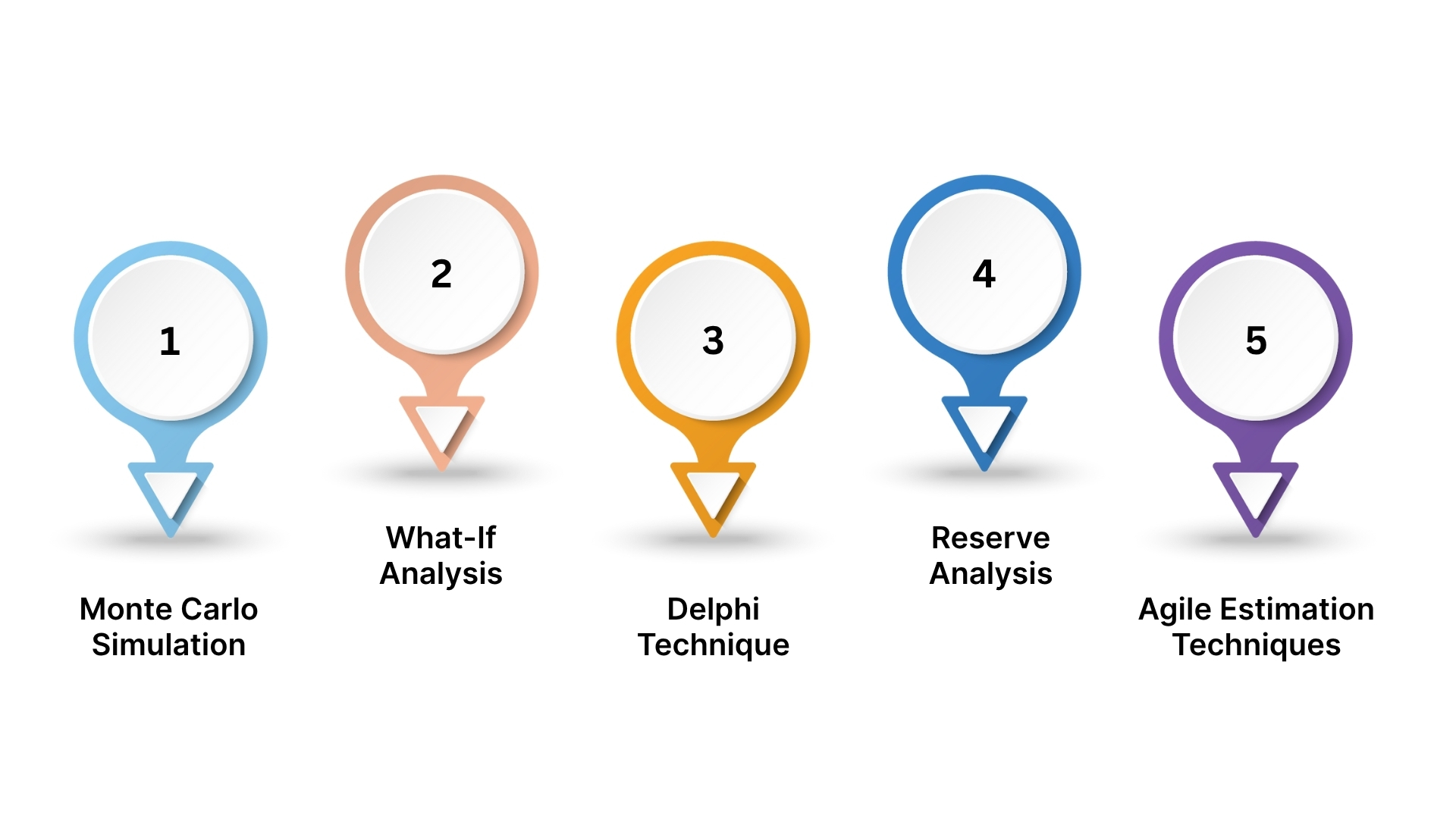
Traditional project estimation methods lay the groundwork for planning, but advanced techniques offer deeper insights and flexibility to handle uncertainty. They help project managers anticipate potential outcomes, evaluate risks, and make better decisions. Here are some of the most effective advanced estimation methods used today:
Uses probabilistic modeling to simulate thousands of project scenarios, producing a range of possible outcomes with confidence levels. Ideal for complex projects with many interdependencies.
Pros: Visualizes risks, quantifies probabilities, supports decisions.
Cons: Requires lots of data, computational power, and can be complex for smaller projects.
Tests different scenarios by adjusting variables like cost, timeline, or resources to see potential impacts.
Pros: Simple, flexible, identifies risks early.
Cons: Depends on input quality, can be subjective.
Gathers estimates from experts through multiple anonymous rounds until a consensus is reached. Useful for projects with limited data or high uncertainty.
Pros: Reduces bias, builds consensus, improves accuracy.
Cons: Time-consuming, depends on expert participation.
Adds contingency reserves to account for unforeseen risks in cost or schedule.
Pros: Adds safety margin, increases estimate confidence.
Cons: Can inflate budgets, may create inefficiencies if overused.
Uses iterative, flexible approaches like Story Points or T-shirt Sizing, refining estimates continuously as the project progresses. Best for dynamic environments like software development.
Pros: Adaptable, supports iterative planning, improves estimate accuracy over time.
Cons: Can seem imprecise to stakeholders, requires disciplined tracking.
Each estimation method serves a different purpose, and you don’t have to rely on just one. The choice you make can be the difference between a smooth, predictable project and one full of unexpected challenges. Let’s see how to decide which estimation approach works best for your project.

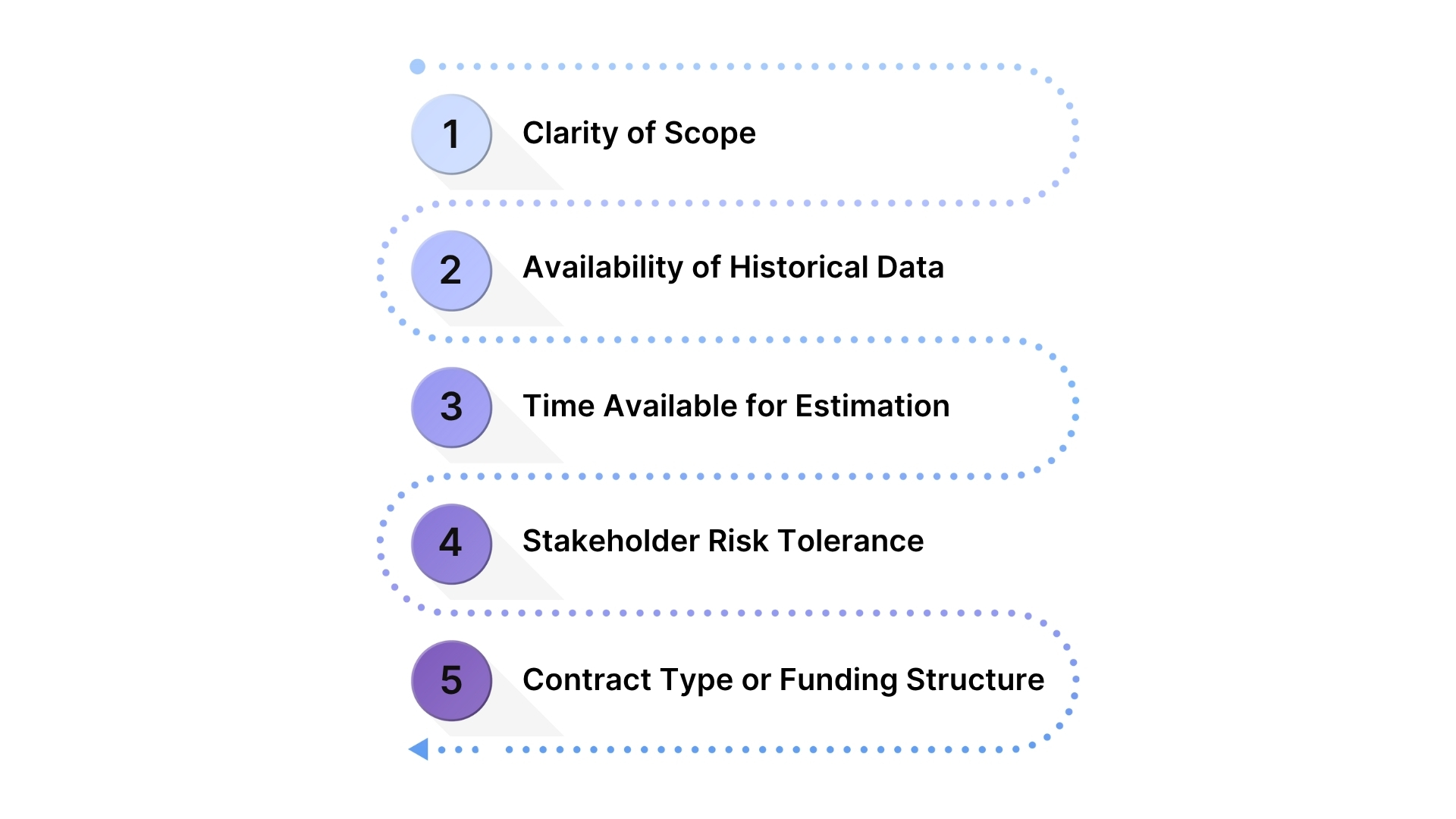
Choosing the right estimation method isn’t random; it depends on your project’s characteristics and context. Use this five-criterion checklist to guide your decision:
Once you’ve answered these questions, match your project to the suitable method:
Align your choice with your project’s complexity, available data, and stakeholder requirements. This ensures your estimates are realistic, actionable, and tailored to the Saudi business environment, not just guesses. Whatever method you pick, document your rationale so future projects can build on a consistent, transparent estimation framework.
Even with the best methods and data, estimates can still go off track. Let’s explore why.
Even the most experienced leaders know that project estimates aren’t guarantees; they’re informed predictions. Estimates can go off track for several reasons: unclear requirements, unexpected risks, human bias, lack of historical data, scope creep, or overlooked tasks.
Here are the common pitfalls and how to overcome them:
Treat estimates as informed predictions, not guarantees. Include contingencies and follow a disciplined, repeatable approach to improve accuracy, accountability, and learning.
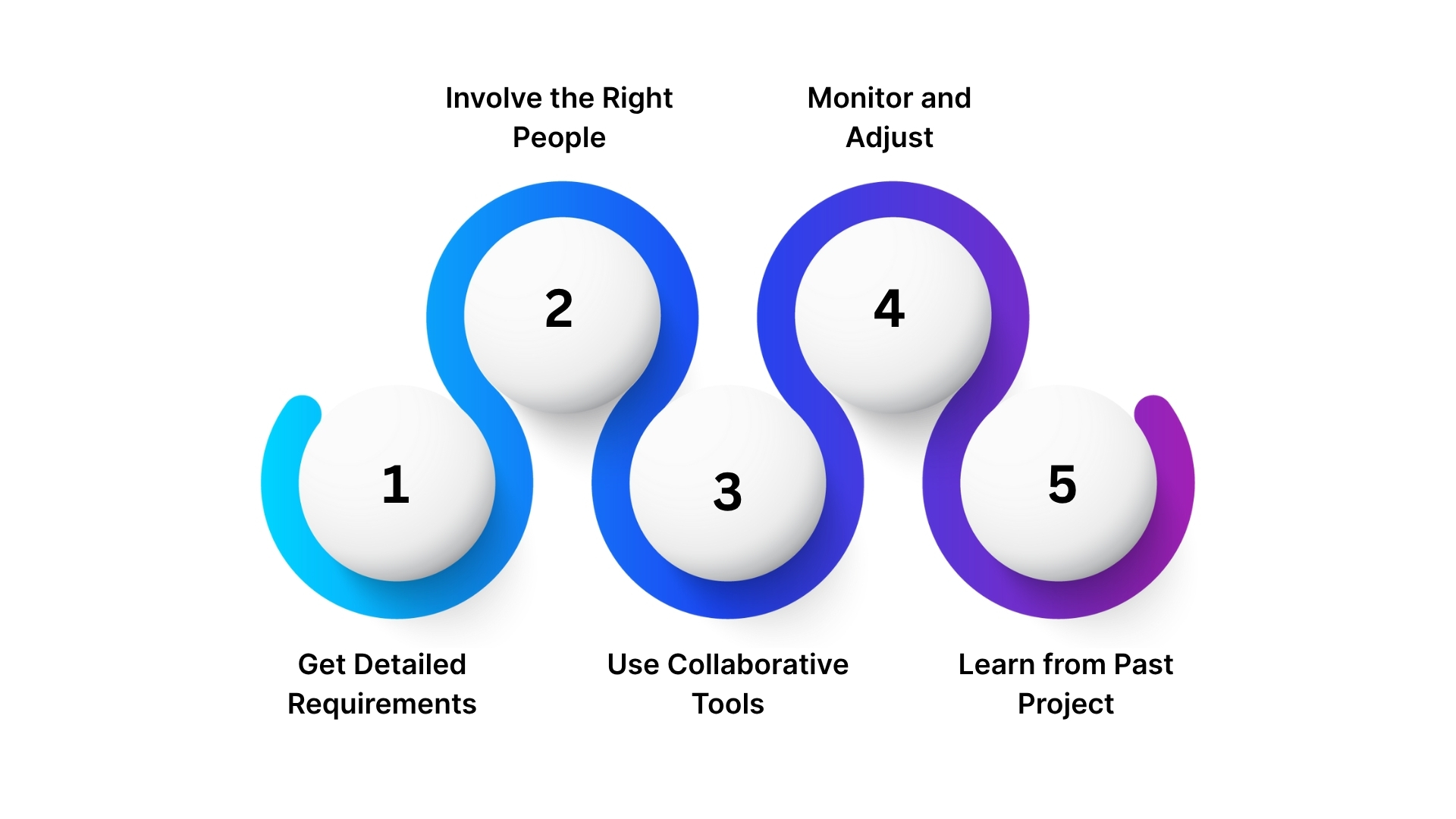
Improving project estimates requires clear processes, collaboration, and learning from experience. By following these best practices, you can reduce errors, manage uncertainty, and produce estimates that stay relevant throughout the project. Here’s how:
While following best practices improves estimation, managing multiple projects, resources, and budgets can still be complex. That’s why leveraging a dedicated project management solution like HAL ERP can turn estimates into real-time, actionable plans, keeping projects on track and aligned with financial goals.
Accurate Saudi SME project estimation is key to delivering successful projects. HAL ERP is a comprehensive project management solution that helps finance leaders and project managers in Saudi Arabia turn estimates into actionable plans, keeping projects on time and within budget.
Here’s how HAL ERP supports better project estimation
Integrating HAL ERP turns static guesses into dynamic, data-driven forecasts. Budgets, timelines, and resources stay updated and aligned with reality, making project management predictable, transparent, and less prone to costly surprises.
"HAL ERP has greatly reduced our manual workload and improved project cost tracking. The system’s inventory and payroll modules have made managing thousands of assets and employees far easier."
— George Mathew, CFO, Jash Holding Company
"The user-friendly platform has helped us smooth out many ERP issues. HAL ERP’s financial and HR features keep our daily operations running seamlessly."
— Fawzia Najjar, Financial Accountant, Abrar Communications Co.
These success stories show how HAL ERP not only streamlines project estimation but also makes everyday operations more efficient and reliable for Saudi businesses. Explore more success stories to discover real results and actionable insights.

Successful projects start with reliable estimates. Accurate predictions of timelines, costs, scope, risks, and resources help control outcomes and protect your bottom line. Choose methods thoughtfully, apply best practices, and leverage Vision 2030 technology solutions like HAL ERP to turn data into actionable insights.
Book a free HAL ERP demo to see how Saudi companies predict costs and maximize ROI.
1. What are the three project estimation techniques?
The main techniques are Bottom-Up Estimating, Top-Down Estimating, and Analogous (comparative) Estimating. Each uses different approaches depending on data and project details.
2. What is the best method of estimation?
There’s no single “best” method. Bottom-Up is most accurate for detailed projects, while Parametric or Analogous works well when historical data is available or for early-stage estimates.
3. What is a 50 90 estimation technique?
It’s a risk-based approach where 50% represents a likely outcome and 90% accounts for worst-case scenarios, helping managers plan for uncertainties in time or cost.
4. What is the 3-point estimation technique?
Three-point estimation uses optimistic, pessimistic, and most likely estimates to calculate a weighted average, providing a more realistic estimate considering uncertainty.
5. How do Agile estimation techniques differ from traditional methods?
Agile estimation is iterative and flexible, often using Story Points or T-shirt sizing, while traditional methods rely on fixed, upfront time and cost estimates.
6. How can I manage risks in project estimation?
Identify potential risks early, assess their impact, plan mitigation strategies, and continuously monitor and adjust estimates throughout the project.
7. What factors can lead to inaccurate project estimates?
Inaccurate requirements, scope changes, unforeseen risks, human biases, and a lack of historical data are common reasons for wrong estimates.